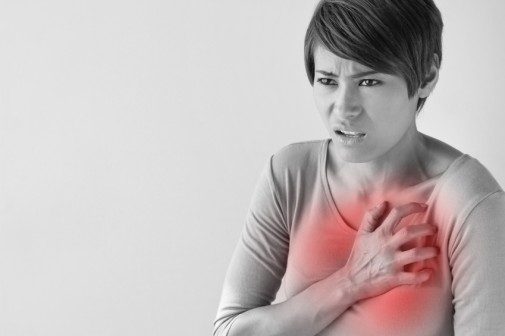4 heart attack warning signs for young women

Symptoms of a heart attack may differ in each person, according to the American Heart Association (AHA), but chest pain is the most common symptom.
However, in a study published in JAMA Internal Medicine, one in five women 55 years old and younger didn’t experience chest pain during a heart attack. Experts stress the importance of understanding all the signs of a heart attack and knowing your risk for having one.
“Women who have a family history of early heart disease are more prone to developing heart-related disease than someone without,” says Dr. Allan Beall, a cardiologist at Advocate Heart Institute at Illinois Masonic Medical Center in Chicago. “It’s important you know your family history and discuss it with your doctor.”
In addition, according to new research from the AHA, women 55 years old and younger may take longer to recuperate after a heart attack.
Getting immediate medical attention following a heart attack is key to increasing a person’s chance of survival and a successful recovery, says Dr. Beall. Learning the signs of a heart attack and calling 911 can save a person’s life.
“In older men and women, chest pain is the number one sign of a heart attack,” says Dr. Beall. “Young women, however, don’t always experience chest pain while having a heart attack. Knowing other symptoms can mean the difference between life and death. It is important young women understand the signs of a heart attack to increase their chance of survival.”
Go Red for Women, an organization affiliated with the AHA, helps women of all ages live healthy lives free of cardiovascular disease.
The organization offers four key signs of a heart attack in women:
- Chest discomfort, pain or pressure in the middle, left or right side that lasts more than a few minutes or goes away and comes back.
- Pain or discomfort in one or both arms, your back, neck, jaw or stomach
- Shortness of breath with or without discomfort.
- Other signs such as breaking out in a cold sweat, nausea or lightheadedness.
Ultimately, a person’s best defense is lowering his or her risk of having a heart attack, says Dr. Beall.
“There are many things young women can do to reduce their risk of having a heart attack now and in the future,” he says. “Healthy lifestyle changes can reduce your risk of heart disease by up to 80 percent. Maintaining a healthy lifestyle is essential.”
The AHA recommends not smoking, exercising for 30 to 60 minutes each day, managing stress and eating a healthy diet to reduce the risk of heart disease.
Related Posts
Comments
About the Author
health enews staff is a group of experienced writers from our Advocate Health Care and Aurora Health Care sites, which also includes freelance or intern writers.

















